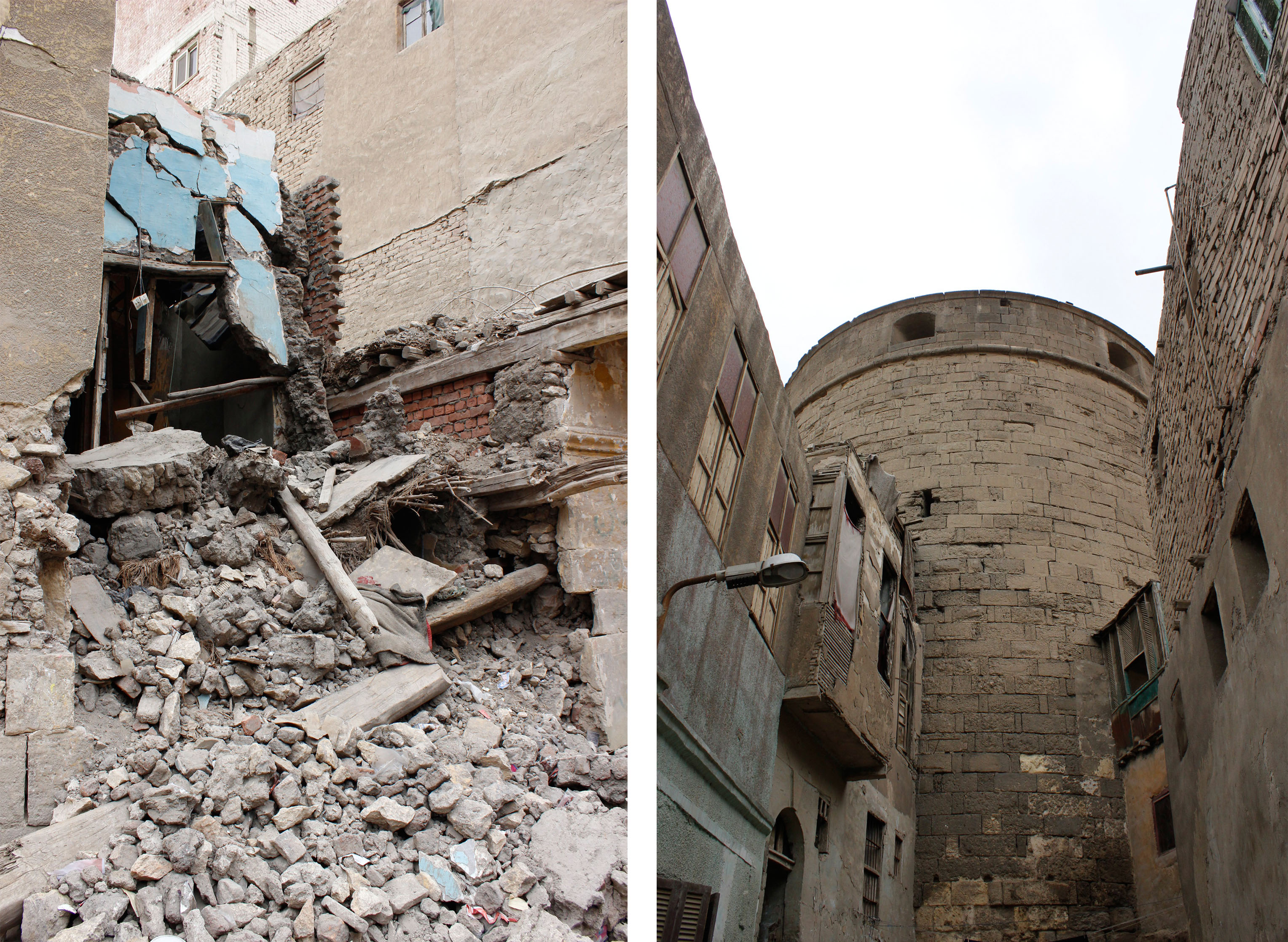
A Walk through Urban Decay: al-Hattaba Is Worth Saving!
##plugins.themes.immersion.article.figure##

Abstract
Beyond the glamour of Cairo history lies a different side of the city that unravels the unique beauty of urban decay. Al-Hattaba, a UNESCO heritage area, is caught in between these narrations of beauty and decay; the beautiful home whose inhabitants want to keep and grow, and the formally enlisted dangerous informal space subject to eviction and demolition.
Al-Hattaba embraces the beauty of its rich and diverse history, growing through time. It beholds moments of prosperity, failure, change, beauty, and loss.
Urban decay photography is used to interpret al-Hattaba’s controversy and explore the bonds between time and memory. We take the reader through a visual journey in al-Hattaba.
It constitutes a photo-sequence that considers al-Hattaba in reflection of its background context, the Citadel of Saladin; historic and residential buildings, some abandoned and attempts of local renovation. This urban setting reflects a rich visual diversity that witnessed its changes through time. We argue that the essence of al-Hattaba’s beauty is in its urban decay. It is a space that will never fail to amaze its visitors with its hidden beauty.
References
- Abo-AlAmayem, Mohamed and Abd-AlHafez, Mohamed. “New Islamic monuments from Al-Hattaba and Bab Al-Wazir cemetery in Cairo” Journal of the General Union of Arab Archaeologists 9, no.9 (2008): 133-160. Translated from the Arabic version available at https://journals.ekb.eg/article_2615.html
- Al-Ibrashy , Mai, et al. Rep. “Research on Intangible Heritage and Storytelling Event in the Action Area - Final Report. Cairo, Egypt”: Urban Regeneration Project for Historic Cairo - URHC, (2014).
- Atharlina .“A Plan for Developing Al-Hattaba Neighborhood in Historic Cairo.” AtharLina Initiative, (2018). https://atharlina.com/projects/studies-masterplan-al-hattaba-neighbourhood-historic-cairo/.
- AtharLina Initiative. “Alkhalifa.” 2020. https://khalifa.atharlina.com/history/al-hattaba/
- Atharlina. “Executive Summary: Preliminary Masterplan for the Development of Al-Hattaba Neighbourhood in Historic Cairo.”
- AtharLina Initiative, (2018). https://atharlina.com/wp-content/uploads/2018/11/Executive-summary_Preliminary-Masterplan-for-the-Development-of-al-Hattaba-Neighbourhood-in-Historic-Cairo.pdf
- Fein, Zachery E. “The Aesthetic of Decay: Space, Time, and Perception.” Thesis, University of Cincinnati, (2011).
- Gafijczuk, Dariusz. “Dwelling Within: The Inhabited Ruins of History.” History and Theory 52, no. 2 (2013): 149-70. http://www.jstor.org/stable/24542849.
- Korsmeyer, Carolyn. “The Triumph of Time: Romanticism Redux,” The Journal of Aesthetics and Art Criticism 72 (2014), 432–433. http://www.jstor.org/stable/43282365.
- Metwalli, Mohamed. “French military campaign of El Khanqah El Nizamia in the Hattaba area in Cairo (1215 AH -1800 AD)
- Archaeological and Architectural study” Journal of the General Union of Arab Archaeologists 18, no.18 (2017): 551-586. DOI: 10.21608 / JGUAA.2017.4759.
- Nieszczerzewska, M. “Derelict architecture: Aesthetics of an unaesthetic space.” Argument: Biannual Philosophical Journal (2016): 387-397. eISSN 2084–1043.
- Rabbat, Nasser. “The Citadel of Cairo: A Historic Guide” Supreme Council of Antiquities, no.2, (2009).
- Rose, Gillan. “Visual Culture, Photography and the Urban: An Interpretive Framework” Space and Culture, India 2, no.4 (2014): 5-13. DOI: 10.20896/saci.v2i3.92.
- Rubio, Ignasi. “Terrain Vague” Anyplace. Cambridge, MA: MIT Press, (1995): 118-124.
- UNESCO World Heritage. “Consideration of Nominations to the World Heritage List”. (1979). https://whc.unesco.org/en/decisions/2203
- Warner, Nicholas. “The monuments of historic Cairo: a map and descriptive catalogue.” American University in Cairo Press, (2005): 135.
- Whitehouse, Tanya. “How Ruins Acquire Aesthetic Value: Modern Ruins, Ruin Porn, and the Ruin Tradition”, Basingstoke, Hampshire, Winchester: Palgrave Macmillan, (2018), https://doi.org/10.1007/978-3-030-03065-0